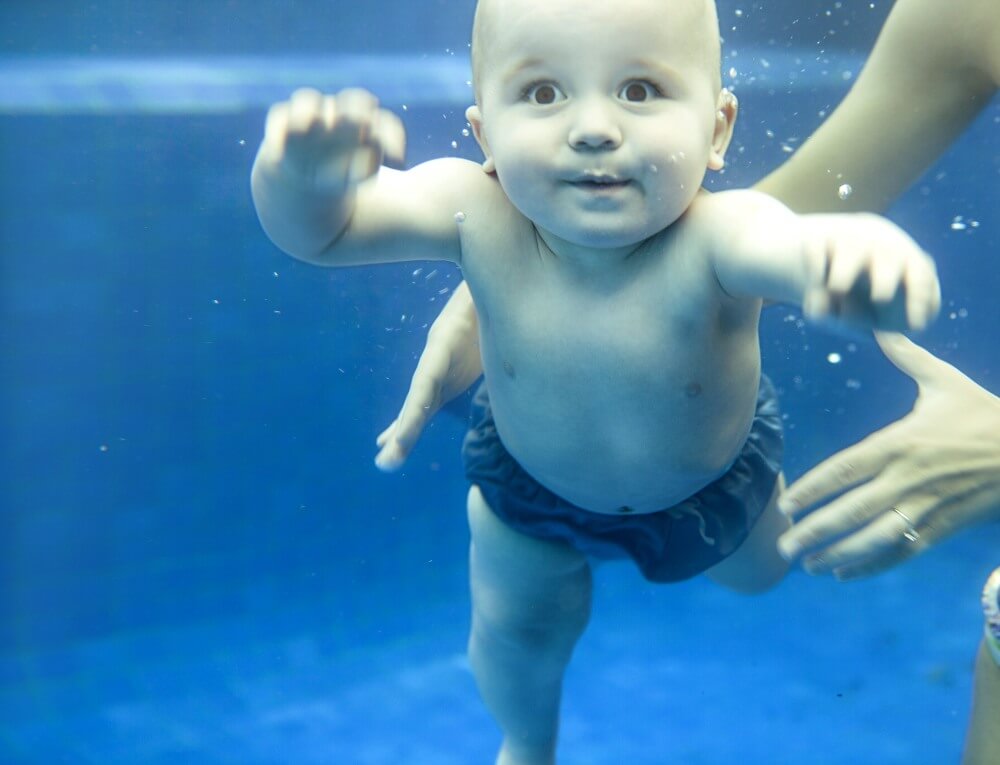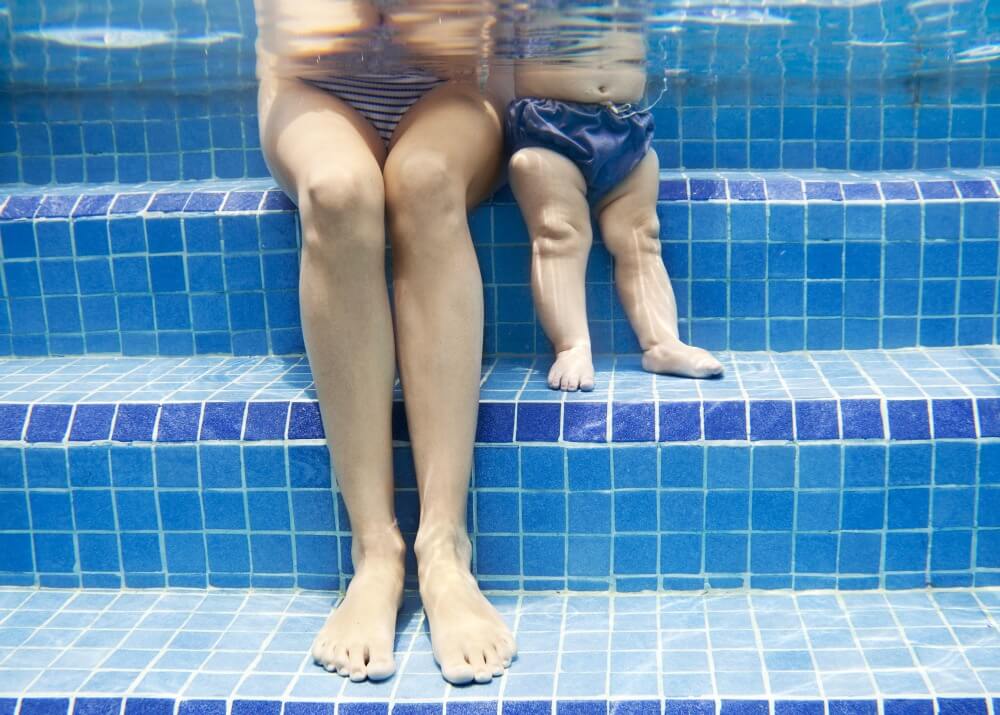
Taking Photos of Your Baby Swimming
The first few years of a child’s life are full of changes. The first time your baby learns to walk or their first time laughing are all magical moments that people like to look back on. However, the first couple of months can still be hard work.
Babies are quite rapid learners when they are in water as they quickly learn to paddle, splash and use their legs. This is a great opportunity for babies to learn how to use their legs and to enjoy being in the water. A baby photoshoot in the water captures these carefree moments, but unfortunately you cannot use a conventional digital camera or a smartphone for taking photos underwater.
In addition, swimming will help to improve early development as the movements babies make during swimming helps to strengthen a baby’s muscles, especially their back muscles. By strengthening these muscles you can help to prevent postural problems later on. Swimming also has a positive effect on a baby’s sense of balance, which helps them to improve their coordination. This assists them to have a good posture when they learn to walk. Swimming is also supposed to help improve a baby’s concentration.
It’s not recommended to take babies swimming if they have allergies as they could develop asthma or hay fever due to the chlorine in the water. Before taking your baby swimming it is a good idea to check if they have any allergies or underlying health problems.
We will provide you with some helpful tips and information for taking your baby swimming and how to take photos in the water.
Taking Your Baby Swimming
The most important part of doing a photoshoot of your baby in the water is making sure that they are safe. Never leave your baby unattended in the water whilst trying to take a photo of them. It is very important that there is always someone nearby who can help in case something happens. It is also a good idea to ask a swimming teacher to be present.
Once your baby is two months old, you can attend swimming lessons, but a lot of experts recommend waiting until your baby is fourth months old. This is because they will then be able to keep their heads above the water and they will also be more resistant to the cold. It is also important to help your baby get used to going underwater. Not every baby enjoys swimming or going underwater straight away, so it is best not to plan a photoshoot in the water until you are certain that your baby has got used to water and enjoys being in it. Babies are sometimes quite curious and they may just pop their head under the water to see what it is like for themselves.
It is very important that your baby feels safe in the water. This can be done by going underwater at the same time as your baby. A familiar face can help bring a smile to your baby’s face. You could also bring their favourite toy along to help them feel relaxed and happy in the water.
Indoor swimming pools provide the perfect conditions for baby a swimming lesson, as the water temperature will be between 31 to 33 degrees and the water does not contain a lot of bacteria. It is important that your baby does not stay any longer than 20 to 30 minutes in the water. If their fingernails become pail or if their lips start to turn blue your baby needs a break from the water and they may feel a bit restless or cold. If this is the case you will need to immediately stop the photoshoot or swimming lesson.

The Perfect Conditions for a Photoshoot in the Water
A photoshoot of a baby swimming in a pool will usually take place at an indoor swimming pool. The fact that such a photoshoot takes place in a swimming pool offers some photographic advantages. A photoshoot with a baby or toddler takes place just below or above the surface of the water, which guarantees a complete colour spectrum of the light. This means that additional accessories, such as a red filter, can be dispensed with. However, this does not apply to taking photos underwater where it is deeper. The red tones in the light decrease considerably from a depth below 5 metres. On the other hand, there are no so-called floating particles, which leave unwanted spots on the picture especially when using a flash. In Swimming pools there aren’t a lot of waves, which will help you to take some great photos.
The Necessary Camera Equipment Required for Taking Photos in Water
You will need the right camera equipment if you are going to take photos under or in water. A conventional digital camera will not work properly underwater.
There are underwater cameras or special underwater housings for digital and SLR cameras. There are also special camera flashes and permanent lights. However, such camera equipment is quite expensive and it is not worth purchasing for a one-off photoshoot. An underwater housing alone can be quite expensive.
Some digital cameras that are specifically designed for children also offer a housing that protects against water and can therefore be used without any issues. Nikon, for example, has models in the Coolpix range that are a bit cheaper, which can also be used as a camera for children aged three to four.
There are also inexpensive alternatives, such as underwater disposable cameras. Underwater disposable cameras are already equipped with film for up to 28 shots and are suitable for depths between 10 and 15 metres. These types of cameras do not show a preview of the photos that you have taken. This means that you will need to keep your fingers crossed that there will be at least one great photo out of approximately 28 shots. However, the quality of the photos is quite often not comparable to the quality of photos taken on a modern smartphone.
You can also get underwater phone cases which are a great alternative. There are large differences in the suitability for different depths ranging from 2 metres to 40 metres. Taking photos on your smartphone offers you the advantage that you can use your smartphone underwater and you can preview any photos you have taken. Furthermore, you can take as many photos as you like and the quality is usually much better than taking photos with a disposable camera.

Using The Right Camera Settings for Underwater
You will need to have good lighting in the room, especially if there is no professional camera equipment with a flash or a permanent light for underwater use. When using a smartphone, there are only a few setting options available. If you are going to use professional camera equipment, you should make sure that you have applied the following settings to your camera. The ISO value should be kept as low as possible. Therefore, a setting between 50 and 100 is recommended. Furthermore, a minimum shutter speed of 1/125 s is useful, as the baby will be a moving subject. For still subjects a shutter speed of 1/40 s will be enough. Use the continuous shooting mode for moving subjects as this will allow you to take several shots and then you can choose the best photos at the end.
Conclusion
Your baby’s health and wellbeing should be the first priority during a photoshoot. If there is any uncertainty about your baby’s health, then it is always a good idea to see a doctor or midwife. Swimming for babies is not solely about learning to swim or going underwater, as it is more about letting them enjoy this new experience whilst supporting their early development.
It is not worth buying any additional camera equipment for a one-off photoshoot or only for occasional use. Swimming pools have great conditions for taking photos underwater. Therefore, it is quite possible to take a good picture with a smartphone or a cheap waterproof digital camera. Analogue disposable cameras are not recommended. However, if you would prefer to use professional camera equipment you can always rent it.
Quite often baby swimming classes also offer a professional underwater photoshoot. This is a great opportunity to get some great photos of your baby learning to swim. The members of staff are all experienced and dedicated professionals who quite often have the right camera equipment.
